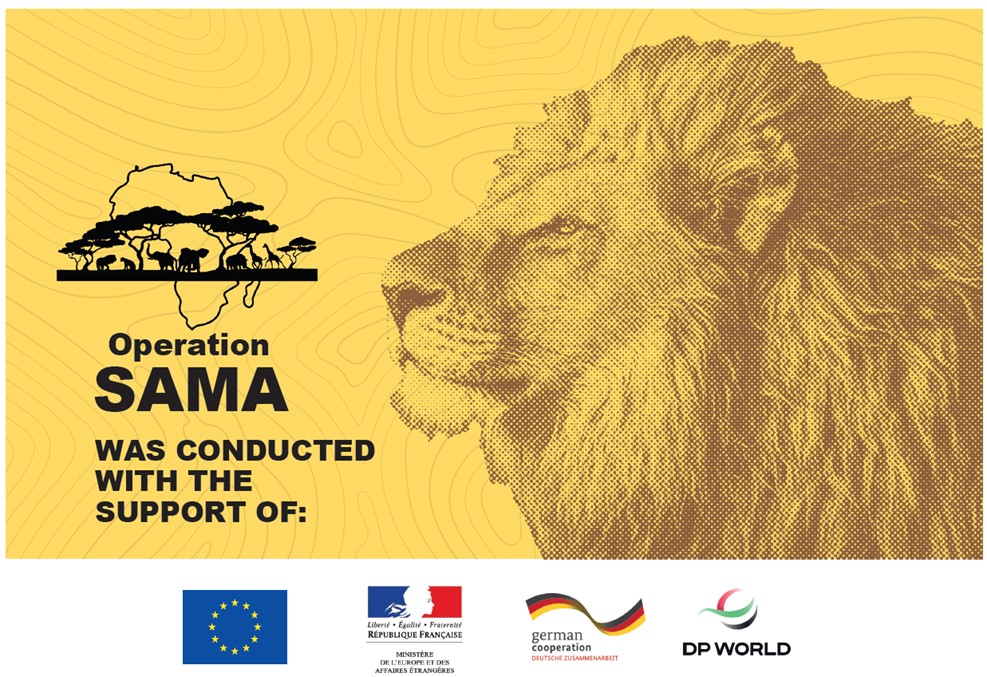

A Collaborative Effort
In 2024, Operation SAMA (Saving African Wildlife through Multilateral Assistance) marked a significant milestone in the fight against wildlife trafficking in Africa. This landmark operation resulted in the confiscation of 104 endangered species products across 19 countries, leading to numerous arrests and prosecutions.
Supported by the UN Office on Drugs and Crime (UNODC) and the Regional Intelligence Liaison Offices of the World Customs Organization (WCO), Operation SAMA was the first Africa-focused operation on wildlife trafficking coordinated entirely by Customs authorities within the continent. The initiative saw the participation of 35 countries, underscoring a strong collaborative effort.
Key Findings
Among the confiscated items, 69% were species listed under the Convention on International Trade in Endangered Species of Wild Fauna and Flora (CITES). These included products derived from elephants, birds, pangolins, monkeys, gazelles, tortoises, and more.
“Operation SAMA tells us that wildlife trafficking in Africa is still happening on a regular basis and it goes beyond trade in iconic species,” said Hanny Cueva-Beteta, Head of the UNODC Environment Team. “This is an alarm bell for all of us and it reminds us that we need to redouble our efforts to build a transnational response.”
 |
Seizure Statistics and detection methods The seizures were predominantly conducted during the first stages of the trade: 52% of the seizures were intercepted during domestic transportation, while 27% were caught at the export stage. 19% were seized at the import stag, and 3% occurred during transit. As for the detection method, 44% of the trafficked products were identified through intelligence investigations, which has proven to be the most successful method during this operation. 33% were found during routine control procedures and 14% were detected through risk profiling. Only 9% resulted from random checks.
|
Vehicles were much more widely used in the act of smuggling than any other means of conveyance, such as air or pedestrian transport. The concealment methods are various: while baggages are the preferred method of concealment, premises and transport have also been observed to be recurring places and instances of concealment. At times, the goods weren’t concealed at all.
Regional Insights
Sam Sivute, Commissioner of the Namibia Revenue Authority, highlighted the operation’s impact in Namibia with an emphasis on panafrican and multi-level cooperation: “Operation SAMA has stimulated cooperation at both the domestic and international levels. The high number of criminal cases intercepted in Namibia and the involvement of foreign nationals indicate that continued cooperation is needed.”
Ibrahim Njoya Njimoluh, Director of WCO’s Regional Intelligence Liaison Office in Central Africa, added - stressing yet again the need for and challenge of strong cooperation - “With Operation SAMA, we have seen several successes but also some challenges. However, it is undeniable that it prompted a cooperation among Customs authorities in Africa like we have never seen before in the fight against wildlife trafficking.”
Future Endeavors
Encouraged by the success of the pilot phase, all parties involved have agreed to continue the initiative with Operation SAMA II. The next phase will emphasize joint investigations and the prosecution of transboundary criminal networks, with planning already underway.
Operation SAMA stands as a testament to the power of international collaboration in addressing critical issues like wildlife trafficking, paving the way for a safer and more sustainable future for Africa's wildlife.